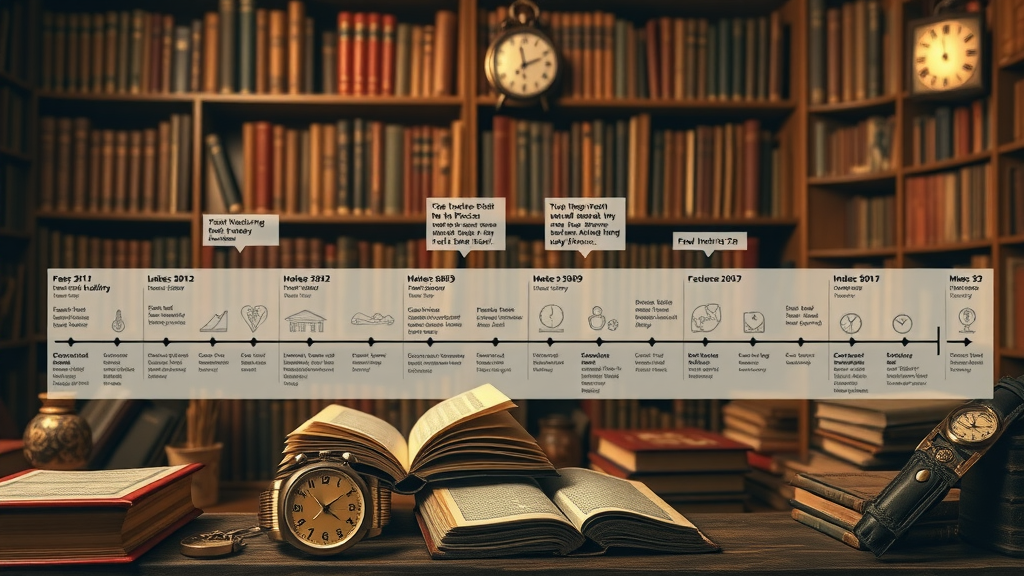Did you know: Some indexed universal life insurance policies can help your cash value grow at rates far beyond those of traditional savings accounts—while providing the security of a lifelong death benefit ? These distinct advantages make IUL benefits a top pick for savvy investors who demand both growth and financial protection . In today’s uncertain world, discovering a policy that adapts to market opportunities and life’s changes could be your smartest move yet.
In this guide, you’ll discover the full spectrum of IUL benefits : from how these insurance policies offer flexible cash value growth linked to the stock market , to powerful tax advantages, downside protection, and strategic liquidity. Whether you’re seeking a modern alternative to term life insurance or want a more dynamic approach than whole life or universal life, you’ll see why smart investors are putting IUL policies at the heart of their financial strategies.
Unlocking IUL Benefits: What Sets Indexed Universal Life Insurance Apart?
Indexed universal life insurance (IUL) is unlike any other life insurance policy on the market. While traditional universal life insurance offers flexibility and permanent coverage, IUL benefits go a step further by directly linking your policy’s cash value growth to a variety of major stock market indices—without actually putting your money at risk in the market. This powerful combination means your IUL policy can provide long-term growth potential, freedom to adjust premiums, and a reliable death benefit for your loved ones, all under one contract.
What truly sets indexed universal life insurance apart is its ability to deliver both a guaranteed minimum return and increased growth potential when the market rises—while locking out the downside during turbulent times. Unlike term life insurance , which only provides coverage for a set period, or whole life insurance, which can be more rigid, IUL policies are designed for customization, adaptability, and lifelong value. This mix of flexibility and protection is why smart investors often favor an IUL over other permanent life insurance solutions.

"Did you know that some indexed universal life insurance policies can grow cash value at rates outpacing traditional savings accounts, while still offering a death benefit?"
Comprehensive Overview: IUL Benefits That Attract Savvy Investors
- Flexible premiums and adjustable coverage
- Cash value growth linked to stock market indices
- Tax-advantaged growth and withdrawals
- Downside protection with floors
- Policy loans for liquidity
- Guaranteed death benefit
When it comes to IUL benefits , versatility is at the core. Unlike more rigid policies, a proper IUL policy lets you adjust your premium payments as your financial situation changes, ensuring your protection remains robust without straining your budget. The cash value tied to market indices means that if the stock market performs well, your cash value can soar—usually subject to a cap or participation rate set by the insurance company . Balancing risk and reward, IUL policies also come with a built-in floor, protecting your account from market downturns. Policy loans further enhance liquidity, giving you access to funds for anything from emergencies to major life milestones, all while your death benefit remains in place.

Key Outcomes: What You'll Learn about IUL Benefits
- Differentiate between IUL, universal life, and other life insurance policies
- Understand cash value growth and stock market participation
- Learn how policy loans and tax-efficiency work in IUL
- Compare IUL benefits with other insurance policies and investment options
By the end of this article, you’ll not only understand the mechanics of an indexed universal life insurance policy , but you’ll be able to clearly articulate the differences between IUL, standard universal life insurance , whole life, and term life insurance . You’ll gain insights into how cash value growth works and how policy loans can provide tax-efficient liquidity, giving you a toolkit for making more informed investment and insurance decisions.
Defining IUL Benefits: How Indexed Universal Life Insurance Works
How universal life insurance evolved into indexed universal life
The evolution of life insurance has led from basic term products to the sophisticated indexed universal life insurance solutions we see today. Universal life insurance policies were introduced to offer permanent coverage with premium flexibility and a cash value account that earns a modest interest rate . However, as investors demanded more growth potential, insurers began to harness the performance of market indices, giving birth to the IUL. Indexed universal life insurance now provides all the core ul insurance benefits plus the unmatched opportunity for cash value growth tied to a market index —often the S&P 500 or similar benchmarks.

Today, an indexed universal life insurance policy is seen as the gold standard for those who want to blend life insurance protection with significant upside potential. The result is a product that adapts to changing financial landscapes, allowing policyholders to capture attractive returns while retaining a crucial floor to guard against market losses.
Growth potential: IUL benefits and the power of stock market-linked returns
At the heart of an IUL policy is its unique blend of safety and opportunity. The policy’s cash value is credited based on the performance of one or more stock market indices , like the S&P 500. This doesn’t mean your money is directly invested in equities; instead, your insurer uses the market index performance as a benchmark to calculate your credited rate, subject to specific caps and participation rates. For example, if the S&P 500 grows 12% in a year and your policy’s cap is 10%, your cash value might be credited 10%. However, if the market falls, a guaranteed floor (often 0% or 1%) shields your cash value from loss.
This structure is particularly appealing for long-term planners and investors looking to take advantage of upward market trends while avoiding the risk of principal loss. It gives your policy growth potential beyond what standard universal life insurance or whole life insurance can offer—making it one of the key IUL benefits highly sought after by smart investors.
Death benefit protection: The dual advantage of IUL policies
Every IUL policy is, at its core, a life insurance policy designed to provide a guaranteed death benefit to your beneficiaries. Unlike term insurance, which expires after a set period, IUL policies provide permanent protection as long as you maintain the minimum required premiums. This means your chosen beneficiaries are protected, no matter when you pass away, securing both your family’s peace of mind and your legacy.
Moreover, the flexibility of IUL allows you to adjust both the death benefit and premium payments as life evolves. This dual function—not only offering significant wealth-building opportunity through growth but also a reliable death benefit—defines the unique value of indexed universal life insurance in a financial strategy.
Comparing IUL Policies with Other Life Insurance Options

IUL insurance vs. universal life insurance: Key differences in benefits and flexibility
While both IUL insurance and standard universal life insurance are forms of permanent life insurance, there are several distinctions in how they operate and the benefits they offer. Universal life insurance policies typically credit a fixed or variable interest rate to your cash value, while IUL links growth to the performance of a market index. This means that with an IUL, your policy’s cash value could potentially grow at higher rates in good market years, whereas regular UL insurance offers more predictable, but often lower, growth.
Flexibility is another crucial point of differentiation. Both policies allow you to increase or decrease your premium payments and adjust your death benefit, but IUL policies generally provide more attractive growth potential and downside protection. For investors seeking greater upside while not wanting to sacrifice security, IUL is a clear favorite.
IUL benefits versus whole life insurance: Pros and cons
Whole life insurance is prized for its stability and guaranteed growth, but it often lacks the flexibility and customization options found in IUL policies. Whole life offers a fixed premium and guaranteed death benefit, making it predictable but less responsive to changing market conditions or personal financial needs.
In contrast, IUL benefits include adjustable premiums, a choice of market-linked crediting methods, and more flexible cash value accumulation. While whole life can be suitable for those valuing consistency above all else, IUL attracts those who see the value in a hybrid policy—combining permanent protection with a customizable, growth-oriented strategy.
Term life insurance vs. indexed universal life insurance: When does IUL stand out?
Term life insurance is the budget-friendly choice for those needing temporary protection, but it comes with an expiration date and does not build any cash value. Once the term period ends, so does your coverage, leaving your loved ones unprotected unless you purchase a new policy—often at a higher premium due to age.
Indexed universal life insurance outpaces term life by offering lifelong protection, cash value accumulation, and enduring value. While the cost of entry is higher, the rewards can be far greater for individuals seeking both security and a vehicle for long-term, tax-advantaged savings.
| Feature | Indexed Universal Life (IUL) | Universal Life | Whole Life | Term Life |
|---|---|---|---|---|
| Death Benefit | Flexible, lifelong | Flexible, lifelong | Guaranteed, lifelong | Fixed, term-limited |
| Cash Value Growth | Market index-linked | Fixed/variable interest | Guaranteed, fixed | None |
| Premium Payments | Adjustable | Adjustable | Fixed | Fixed |
| Downside Protection | Floor rates | Account minimums | Guaranteed | Not applicable |
| Liquidity | Policy loans/withdrawals | Policy loans/withdrawals | Policy loans | None |
| Tax Advantages | Yes | Yes | Yes | No |
Cash Value Growth: Maximizing IUL Benefits Without Direct Market Exposure
Indexed universal crediting methods and their effect on cash value grow
The crediting methods of an indexed universal life insurance policy are central to how your cash value grows. The insurer tracks the performance of a chosen market index—commonly the S&P 500, Nasdaq, or Dow Jones—over each policy year, applying a cap (maximum rate) and a floor (the lowest your credited rate can be, typically 0%). Your annual credited interest is based on how much the index rises, multiplied by a participation rate (e.g., 80% of the index return), minus any management fees. These rules let your IUL participate in market gains, often outperforming fixed-rate universal life insurance, while never exposing your cash value to direct market losses.

The balance between caps and participation rates means you might not benefit from the market’s full upside, but you’re also not at risk if the market declines. This crediting approach makes IUL policies especially attractive for anyone who values stable, tax-deferred growth without market volatility.
Downside protection: Floor rates and how they shield your cash value
One of the standout IUL benefits is the downside protection built into these policies. Even if the stock market posts a negative year, your policy is protected by a guaranteed floor rate, usually set between 0% and 1%. This ensures you never lose principal due to market declines. For investors wary of stock market volatility, this shield is a game-changer, preserving your wealth during unpredictable cycles while still positioning you to enjoy future growth.
"With an IUL policy, your cash value grows when the market performs—but is protected from loss during downturns."
This protection is especially powerful when compared to variable universal life or investment accounts exposed directly to the market. The assurance that your accumulation will never drop below your floor keeps your strategy moving forward, no matter what happens on Wall Street.
Annual reset feature and compounding growth in indexed universal life
Unlike traditional investments, most indexed universal life policies feature an annual reset. This means your gains lock in every policy anniversary: whatever your account grows in a strong market year becomes the new baseline, and that value can’t be eroded by subsequent downturns. Each year, your credited growth is compounded, enhancing your long-term cash value accumulation .
This annual reset, in combination with downside protection, positions IUL as a powerful tool for steady, tax-advantaged asset growth—especially for long-term planners and those seeking reliable wealth-building with a life insurance framework.
Flexibility and Control: Customizing Your Life Insurance Policy with IUL
Adjustable premiums and death benefit options in IUL insurance
The hallmark of IUL insurance is flexibility . Unlike rigid whole life or term options, indexed universal life lets you adjust both your premium payments and death benefit as your financial goals change. If you experience a windfall, you can contribute extra premiums (within IRS limits) to supercharge your cash value. During leaner times, you have the freedom to reduce or skip payments, as long as there’s enough cash value to cover policy costs.

On the benefit side, you can often switch between level and increasing death benefit options or request a death benefit increase as your needs evolve. This customization means your life insurance is tailored not just for today, but for every chapter of your financial journey.
Policy loans and withdrawals: Liquidity benefits of an IUL policy
A unique IUL benefit is easy access to your cash value through policy loans and withdrawals. You can borrow against your cash value—often at favorable interest rates set by the insurance company—without triggering taxable income or penalties. The loan doesn’t reduce your accumulation or credited growth, and if properly managed, will not affect your death benefit.
Withdrawals are also possible, up to your basis (total premium paid minus prior withdrawals), usually without penalty or taxation. This liquidity distinguishes IUL policies from traditional retirement accounts, giving you peace of mind with funds available for emergencies, investments, education expenses, or business opportunities.
Supplemental retirement income with tax-advantaged IUL withdrawals
Savvy retirement planners use indexed universal life insurance as a source of tax-advantaged income in their golden years. By leveraging policy loans and withdrawals (structured within IRS guidelines), you can access a stream of cash without dipping into your taxable accounts. Unlike pre-tax retirement plans, there are generally no required minimum distributions and no penalty for early withdrawals.
- Flexible contribution amounts
- Ability to access funds in emergencies
- No mandatory distribution requirements

IUL Benefits & Tax Advantages Versus Other Investment Products
Comparing IUL tax benefits to 401(k) and Roth IRAs
When stacked against popular retirement vehicles like a 401(k) and Roth IRA, the tax advantages of IUL policies are clear. Contributions are made with after-tax dollars, similar to Roth IRAs, and cash value growth is generally sheltered from current taxation. Policy loans and qualified withdrawals can further provide tax-free income, and your death benefit is typically free from federal income tax—making IUL an attractive addition to high-income households who have maxed out conventional retirement accounts.
| Account | Growth Taxation | Withdrawal Taxation | Required Minimum Distributions (RMDs)? | Tax-Free Death Benefit? |
|---|---|---|---|---|
| IUL Policy | Tax-deferred | Tax-free (via loans) | No | Yes |
| 401(k) | Tax-deferred | Taxable | Yes | No |
| Roth IRA | Tax-free | Tax-free (qualified) | No | No |
| Brokerage | Taxable | Taxable | No | No |
Estate planning and wealth transfer features of universal life insurance
For affluent families and legacy-minded investors, universal life insurance policies are tools for effective estate planning and tax-sheltered wealth transfer. The death benefit can be structured to bypass probate, deliver tax-free income to heirs, or provide funds to cover estate taxes. Advanced strategies may use trusts or gifting techniques, with IUL providing an ideal balance of asset growth, flexibility, and inheritance protection.
"IUL policies not only shelter gains from income tax but also deliver tax-free death benefits to beneficiaries."

This makes IUL especially appealing for business owners and professionals seeking to protect family wealth across generations, while also benefiting from tax-efficient accumulation during their lifetimes.
Potential Drawbacks: Understanding IUL Risks and Limitations
Cost considerations and fees unique to IUL policies
While the rewards of indexed universal life insurance are substantial, there are costs to consider. Management fees, cost of insurance charges, administrative expenses, and sometimes surrender charges can erode returns if not carefully managed. IUL policies carry higher cost structures, particularly in early years compared to term life, and excessive policy loans or underfunding can risk a policy lapse.
Caps, participation rates, and limitations in indexed universal life benefits

It’s important to understand the impact of caps and participation rates on your IUL benefits . Caps limit the maximum annual interest you can be credited, while participation rates determine what portion of the index gain applies to your account. This means you may not receive the full upside during extraordinary market years. Savvy investors weigh these trade-offs against the unmatched downside protection and liquidity IUL provides.
Complexity and need for active management in universal life insurance
Navigating IUL policies requires a more active, hands-on approach. Policy owners must periodically review funding levels, crediting method choices, and market performance to maximize returns. Neglecting these tasks can result in underperformance or policy lapse—making professional guidance from a financial planner or insurance expert essential for best results.
- Potential for lower returns due to policy caps
- Higher cost structures than term life
- Risk of policy lapse without proper funding
Profiles in Practice: Who Should Consider IUL Benefits?
IUL benefits for high-income professionals and business owners
IUL policies are particularly attractive to high earners, entrepreneurs, and business owners looking for high-value life insurance policies that double as investment vehicles. These individuals frequently max out traditional retirement options and desire both growth and flexibility to support liquidity, legacy, and business succession planning. The leverage offered by tax advantages , along with competitive cash value accumulation, makes IUL a practical tool for portfolio diversification.

IUL for long-term planners seeking tax-free legacy
If you’re focused on passing tax-free wealth to the next generation, the unique death benefit and tax treatment of IUL rise to the occasion. These policies allow growth of cash value during your lifetime to supplement retirement or other needs, while also giving heirs a sizable, tax-free inheritance—ideal for multigenerational planning.
Special cases: Using IUL in estate and business succession planning
IUL benefits can be engineered to facilitate business buy-sell agreements, fund key person insurance, or guarantee liquidity for estate settlements. When structured correctly, indexed universal life becomes a flexible, tax-efficient bridge between current wealth and future obligations.
- Individuals seeking both life insurance and investment growth
- People who have maxed out other retirement vehicles
- Those looking for downside protection
Expert Insights: What Financial Planners Say About IUL Benefits
"Not every investor needs an IUL policy, but for the right client, the balance of protection and potential tax-free growth is hard to match." – Certified Financial Planner
The consensus among financial planners is clear: IUL benefits are not universal solutions, but for those who value flexibility, legacy planning, and long-term cash value growth, these policies rise above other life insurance strategies. The right guidance ensures you harness all the potential while mitigating the policy’s complexity and long-term risk.
People Also Ask
What is the advantage of IUL?
- The key advantage of an IUL is its ability to provide both a death benefit and cash value growth tied to a stock market index, without risking loss when the market falls. Features like flexible premiums and tax-advantaged growth enhance its appeal for long-term planners.
What is the 7 pay rule for IUL?
- The 7 pay rule ensures an IUL policy is not classified as a Modified Endowment Contract (MEC). If too much premium is paid in the first seven years compared to the death benefit, the policy could lose its key tax advantages.
What are the downsides of IUL?
- IUL drawbacks can include complex fee structures, caps on cash value growth, policy lapses if underfunded, and the need for vigilant management. Costs are often higher than with term life insurance.
Is an IUL better than a 401k?
- An IUL offers greater flexibility in access and legacy planning, while a 401(k) may have higher contribution limits and employer matches. IUL policies often appeal to high earners looking for tax-advantaged legacy solutions, but are not direct replacements for traditional retirement accounts.
Practical Steps: How to Evaluate and Maximize IUL Benefits
- Start by assessing your current insurance policies and retirement needs
- Compare different indexed universal life policies for caps, floors, and premium flexibility
- Work with a financial planner to avoid overfunding and policy lapse
- Review tax scenarios for your unique financial picture

Frequently Asked Questions on IUL Benefits
- How do I use policy loans with an IUL? — You may take loans against your policy’s cash value, typically at competitive interest rates, without triggering immediate tax consequences. It’s important to manage these loans carefully to avoid reducing your death benefit or causing a policy lapse.
- Are IUL benefits guaranteed? — While death benefits are guaranteed as long as required premiums are paid, cash value growth is subject to the cap, floor, and participation rate chosen by your insurance company. Always review your policy for complete details.
- Can I increase the death benefit later? — Most IUL policies offer flexibility to increase the death benefit (subject to underwriting approval and additional premiums), allowing your coverage to adapt to life changes.
- What is the minimum funding for an IUL? — Minimum funding requirements vary by policy and insurer, but policies must generally be funded enough to cover insurance costs and to avoid lapsing. Your advisor can help design a funding schedule appropriate for your goals.
Key Points to Remember about IUL Benefits
- IUL benefits combine life insurance with investment opportunity
- Offers more flexibility than many insurance policies
- Tax advantages and cash value growth are main draws
- Requires careful management to maximize value
Advance Your Financial Strategy: Consider IUL Benefits for Your Portfolio
Take action by assessing your needs, exploring your options, and working with a knowledgeable advisor—so you can leverage IUL benefits to achieve your unique long-term goals.
Indexed Universal Life (IUL) insurance offers a unique blend of life insurance protection and investment potential, making it an attractive option for savvy investors. The article “Benefits of Indexed Universal Life (IUL) Insurance” on Nasdaq.com provides an in-depth look at how IUL policies allow policyholders to allocate premiums to a cash value account that earns interest based on stock market index performance, offering potential for higher returns compared to traditional fixed-interest life insurance policies. ( nasdaq.com )
Additionally, the article “The Pros and Cons of Indexed Universal Life (IUL) Insurance” by Unique Investment Advisors highlights the flexibility of IUL policies, including adjustable premiums and death benefits, as well as tax advantages such as tax-deferred growth and tax-free access to cash value through loans or withdrawals. ( uniqueinvestmentadvisors.com )
For those seeking a comprehensive understanding of IUL benefits, these resources offer valuable insights into how these policies can provide both financial protection and growth opportunities.
 Add Row
Add Row  Add
Add 




Write A Comment